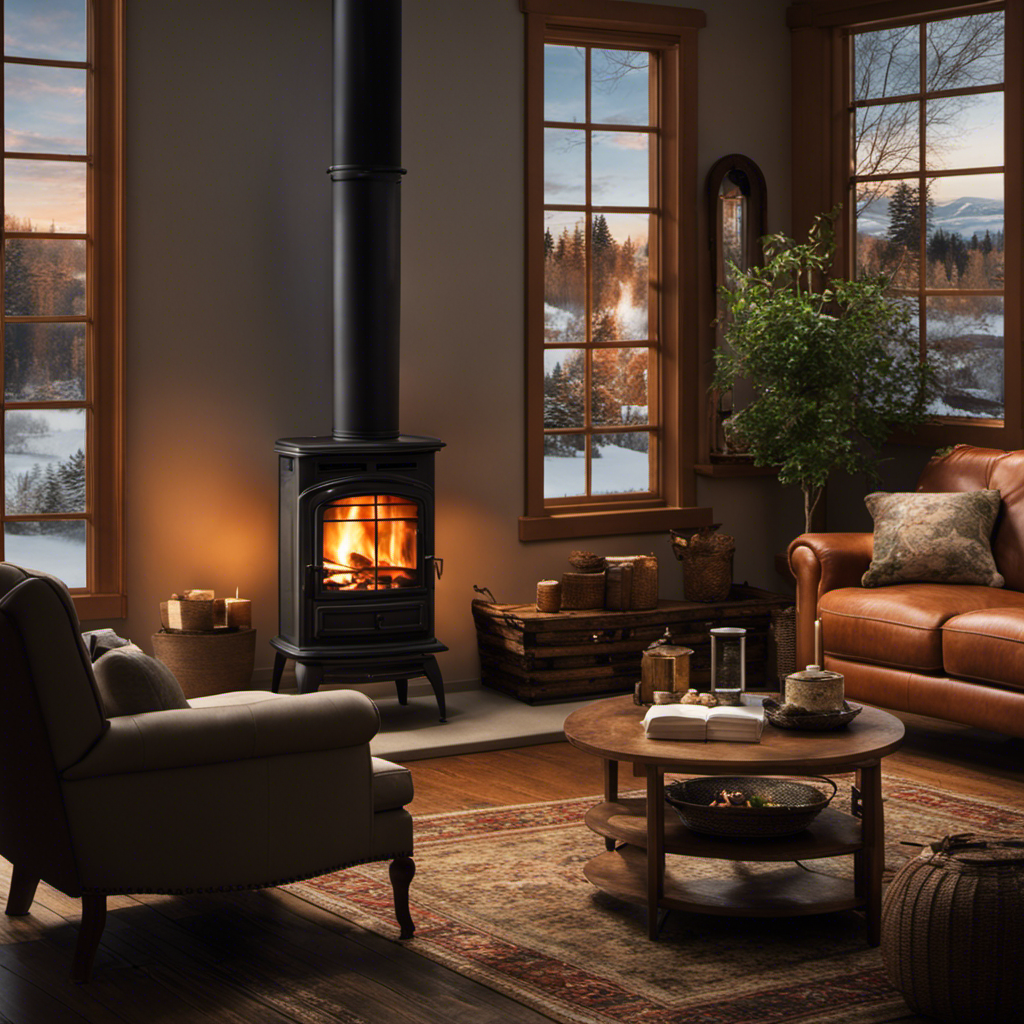Did you know that almost half of all home heating-related fires are caused by heating devices like wood stoves? That’s why it’s important to know the required clearance space around a wood stove for safety.
In this article, I’ll guide you through the importance of maintaining a proper distance, the potential fire hazards, and the necessary precautions to keep your home safe.
So, let’s dive in and learn how to create a secure environment around your wood stove.
Key Takeaways
- The safety radius around a wood stove is crucial for fire prevention.
- It is recommended to have at least three feet of clearance on all sides of the stove.
- Proper distance between a wood stove and surrounding objects should be determined based on temperature requirements and wood stove size.
- Flammable materials should be stored in designated cabinets or containers away from potential ignition sources.
The Importance of a Safety Radius
I can’t stress enough the importance of maintaining a proper safety radius around a wood stove. Fire prevention is crucial when it comes to using a wood stove, and one of the best ways to prevent a fire is by ensuring that there’s enough space around the stove for proper heat distribution.
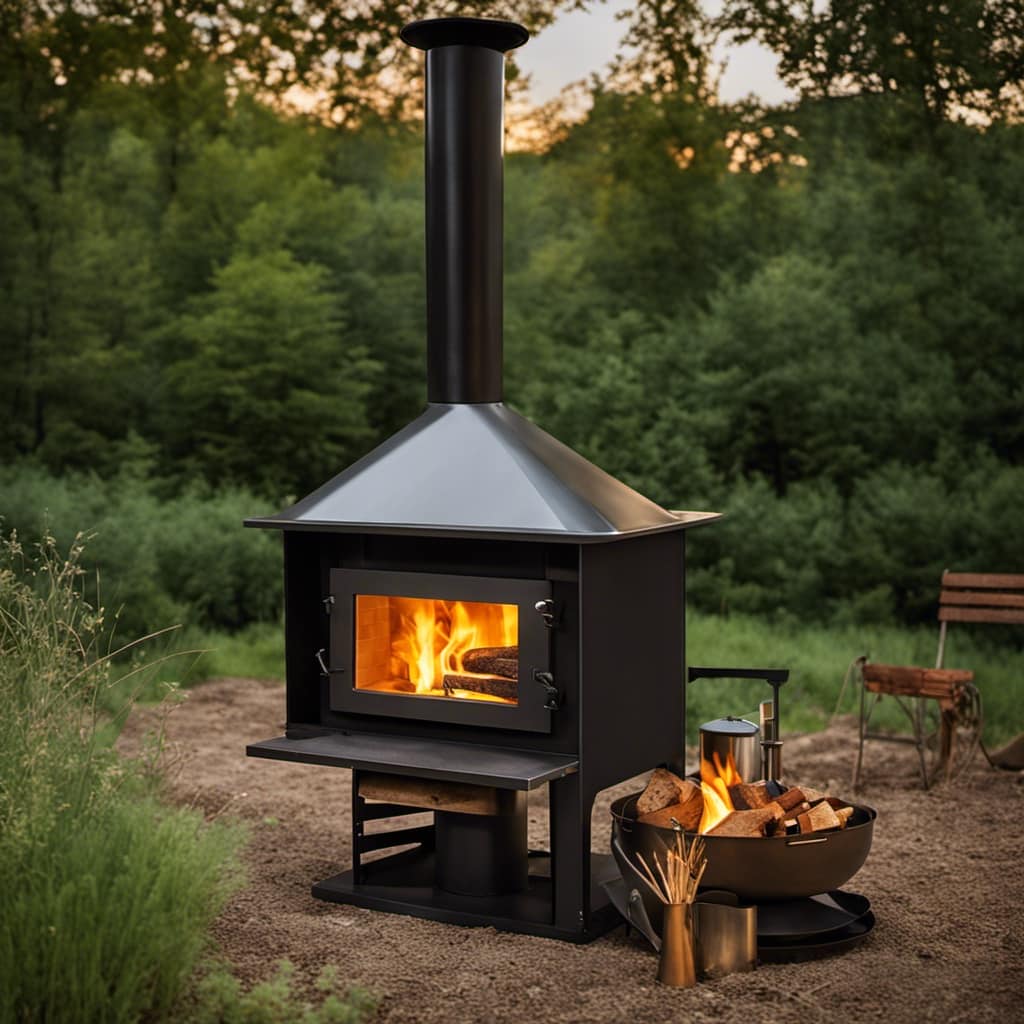
The safety radius refers to the area around the stove that should be clear of any flammable materials. This includes furniture, curtains, and any other combustible items. It’s recommended to have at least three feet of clearance on all sides of the stove.
This allows the heat to disperse evenly and reduces the risk of accidental fires. So, always remember to maintain a proper safety radius to ensure both fire prevention and efficient heat distribution.
Understanding Fire Hazards
Fire hazards can be better understood by identifying potential ignition sources and implementing preventive measures. To effectively prevent fires, it’s crucial to be aware of the following:
- Common Ignition Sources:
- Faulty electrical wiring or appliances
- Unattended open flames, such as candles or stoves
- Improperly stored flammable materials
- Fire Prevention Measures:
- Regularly inspect electrical systems and replace damaged cords or outlets
- Never leave open flames unattended and keep flammable items away from heat sources
- Store flammable materials in designated, well-ventilated areas
- The Role of Fire Extinguishers:
- Install fire extinguishers in easily accessible locations throughout the premises
- Train occupants on how to properly use fire extinguishers
- Regularly inspect and maintain fire extinguishers to ensure their functionality
Determining the Proper Distance
To ensure safety, it is important to measure and establish the proper distance between a wood stove and surrounding objects. This is crucial because wood stoves can reach high temperatures and pose a fire risk if not properly positioned. Measuring temperature requirements and choosing the right wood stove size are key factors in determining the safety radius.
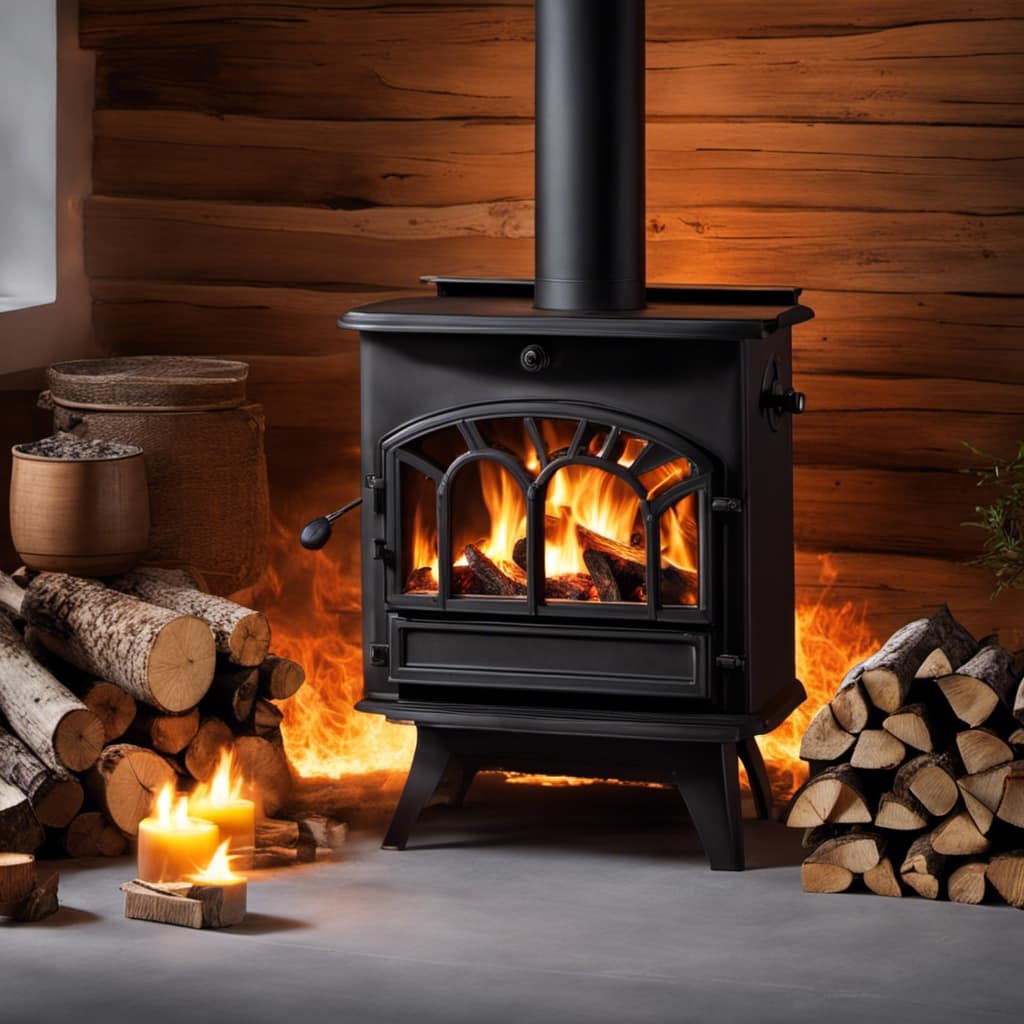
To help you visualize this, consider the following table that highlights the recommended distances for different wood stove sizes:
| Wood Stove Size | Minimum Distance from Combustible Materials | Minimum Distance from Non-Combustible Materials |
|---|---|---|
| Small | 36 inches | 12 inches |
| Medium | 48 inches | 18 inches |
| Large | 60 inches | 24 inches |
Safety Precautions for Flammable Materials
In order to prevent accidents, it’s important to store flammable materials away from heat sources and in well-ventilated areas. Here are three essential fire prevention strategies to consider:
- Proper Storage:
- Flammable materials should be stored in designated cabinets or containers that are specifically designed for their safekeeping.
- These storage units should be located away from any potential ignition sources such as open flames, electrical outlets, or heating elements.
- It’s crucial to ensure that these materials are stored in a cool and dry environment to minimize the risk of combustion.
- Clear Pathways:
- It’s essential to maintain clear and unobstructed pathways throughout the workspace or living area.
- This allows for easy access and evacuation in case of an emergency.
- Remove any clutter or unnecessary items that could hinder escape routes or impede the movement of individuals during a fire.
- Regular Inspections:
- Regularly inspect the storage areas for any signs of damage or deterioration.
- Check for leaks, corrosion, or any other potential hazards that could increase the risk of a fire.
- It’s also important to ensure that fire extinguishers are accessible, fully charged, and in proper working condition.
Maintaining a Safe Environment
I always prioritize the well-being of my family by ensuring that I’m vigilant in maintaining a safe environment with thorough inspections and by keeping potential hazards away from and out of reach.
One crucial aspect of maintaining a safe environment is creating a fire escape plan. It’s essential to have a well-thought-out plan in place, ensuring that everyone in the family knows the designated escape routes and meeting points in case of a fire emergency. Regular fire drills should also be conducted to practice the escape plan.
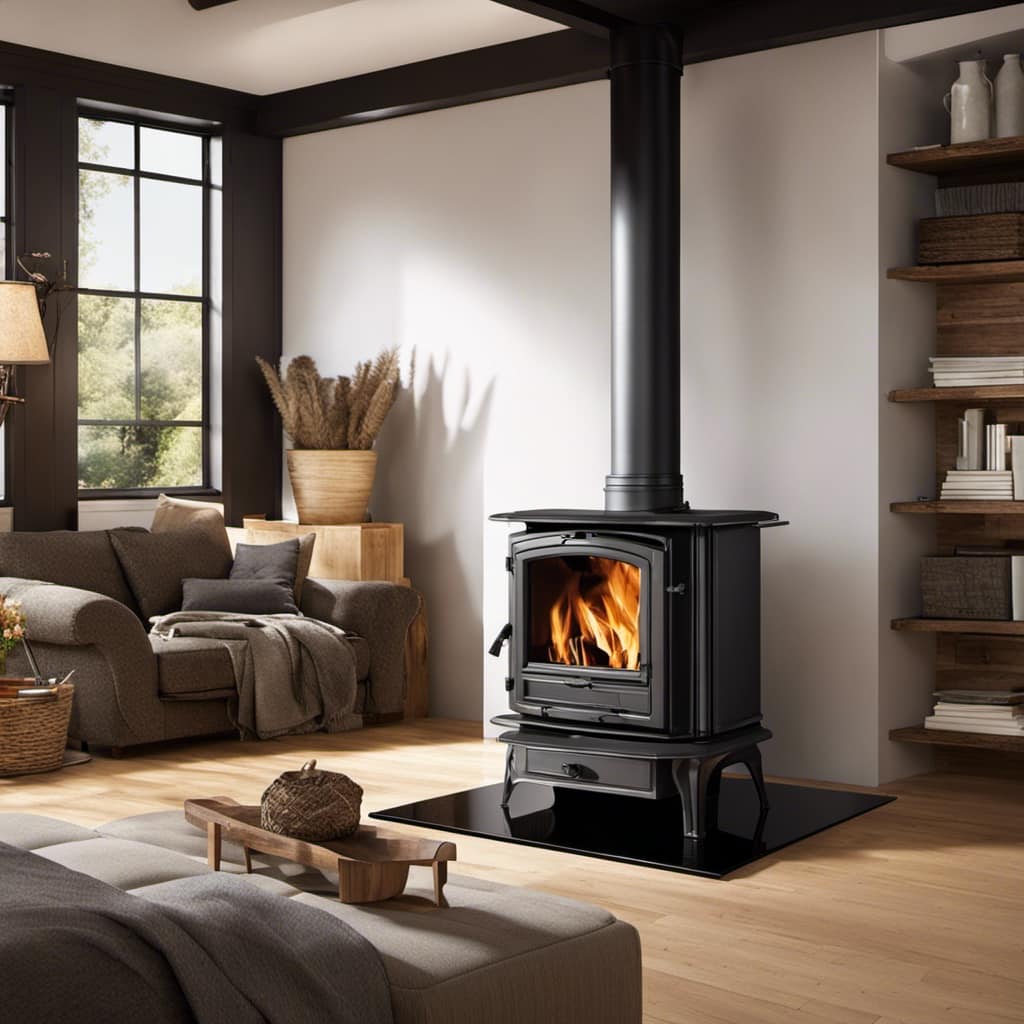
Another important factor in maintaining a safe environment is maintaining proper ventilation. It’s crucial to ensure that all areas of the house, especially those with potential fire hazards like the kitchen or fireplace, are well-ventilated to prevent the buildup of harmful gases. Regularly checking and cleaning ventilation systems, such as chimneys or exhaust fans, is necessary to ensure their proper functioning and reduce the risk of fire hazards.
Frequently Asked Questions
What Are the Different Types of Wood Stoves Available in the Market?
There are several types of wood stoves available in the market, each with varying levels of efficiency. These include traditional cast iron stoves, modern steel stoves, and even pellet stoves for more sustainable heating options.
Can I Place a Wood Stove on a Wooden Floor?
Yes, it is possible to place a wood stove on a wooden floor, but precautions must be taken to ensure safety. Proper ventilation is crucial, and it is recommended to use non-combustible flooring materials like stone or tile.
How Often Should I Clean My Wood Stove to Maintain Its Safety?
To maintain the safety of my wood stove, I clean it regularly. Knowing how to properly clean a wood stove is crucial. Signs that indicate a wood stove needs cleaning include excessive smoke, a strong odor, and a decrease in heat output.
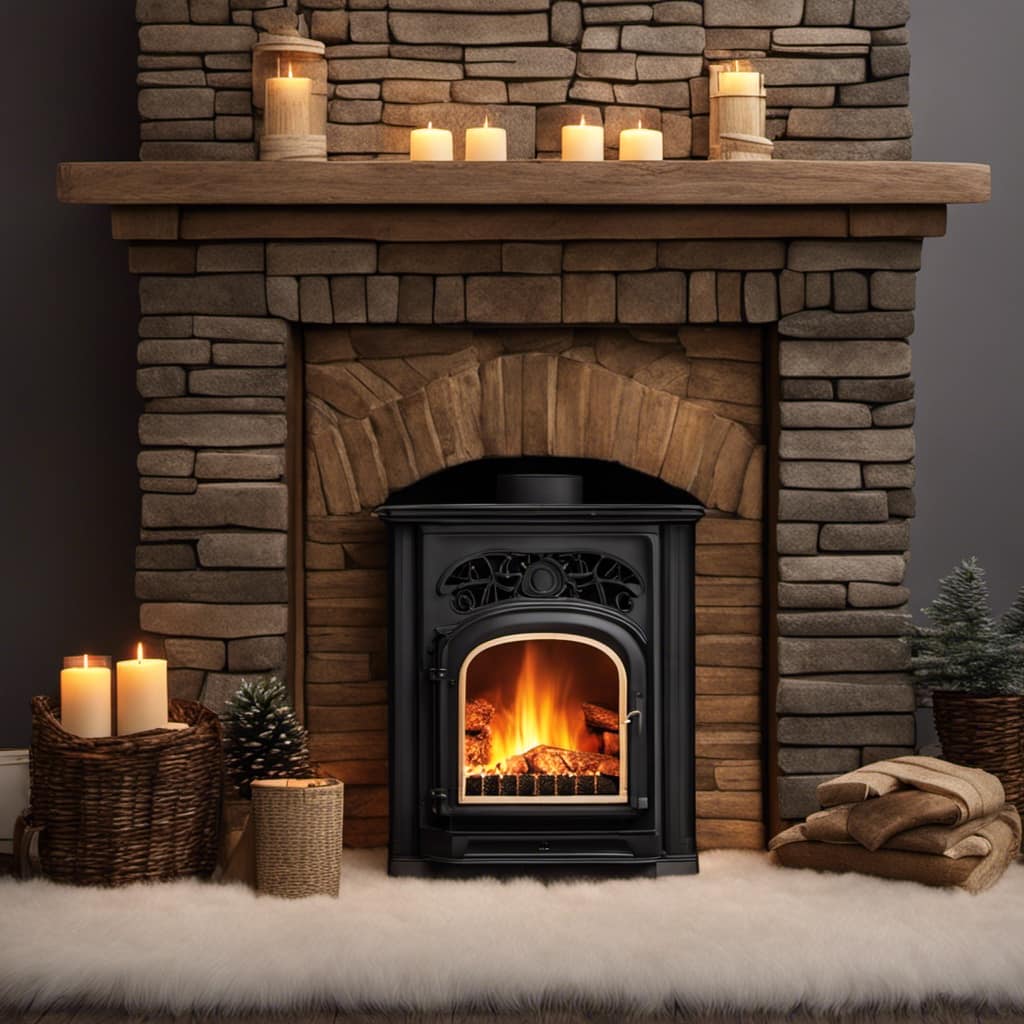
Are There Any Safety Regulations or Building Codes Regarding the Installation of a Wood Stove?
Safety regulations and building codes are crucial when installing a wood stove. They ensure proper ventilation, clearance from combustible materials, and the safety radius around the stove. It’s essential to follow these guidelines to prevent accidents and maintain a safe environment.
Can I Install a Wood Stove in a Small Room or Does It Require a Larger Space for Safety Reasons?
I can install a wood stove in a small room, but it requires proper ventilation and safety precautions. It’s important to consider the size of the room, clearances to combustible materials, and the recommended safety radius around the stove.
What is the minimum safe distance required around a wood stove in Washington State?
The minimum safe distance required around the smallest wood stove in Washington is 36 inches. This includes any combustible materials such as walls, furniture, and curtains. It is essential to follow these regulations to prevent fire hazards and ensure the safety of your home.
Conclusion
In conclusion, ensuring a proper safety radius around a wood stove is crucial to prevent fire hazards.
Just imagine a glowing ember, radiating warmth and comfort, but also the potential for destruction.

By maintaining a safe distance and taking precautions with flammable materials, we create a barrier between the cozy warmth and the dangerous flames.
It’s like building a protective shield, ensuring the well-being of our homes and loved ones.
So let’s always prioritize safety when enjoying the warmth of a wood stove.
Growing up surrounded by the vast beauty of nature, Sierra was always drawn to the call of the wild. While others sought the comfort of the familiar, she ventured out, embracing the unpredictable and finding stories in the heartbeat of nature.
At the epicenter of every remarkable venture lies a dynamic team—a fusion of diverse talents, visions, and passions. The essence of Best Small Wood Stoves is crafted and refined by such a trio: Sierra, Logan, and Terra. Their collective expertise has transformed the platform into a leading authority on small wood stoves, radiating warmth and knowledge in equal measure.







